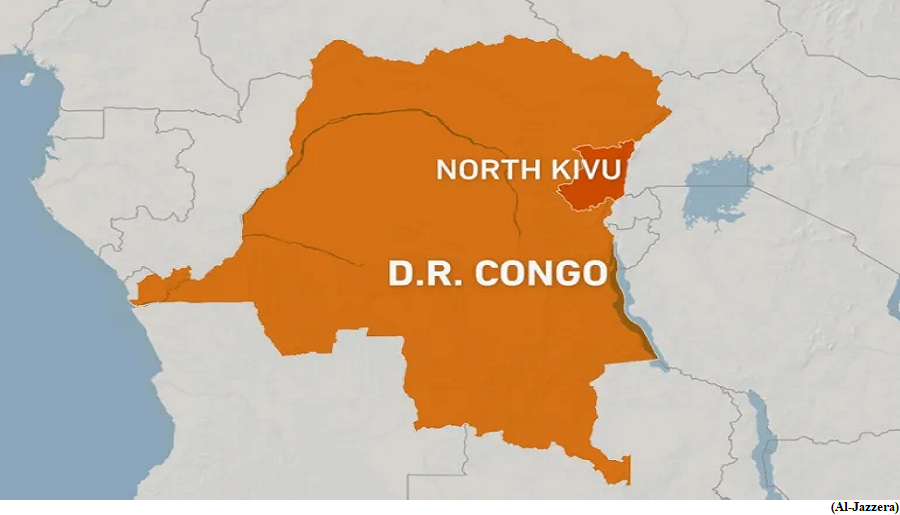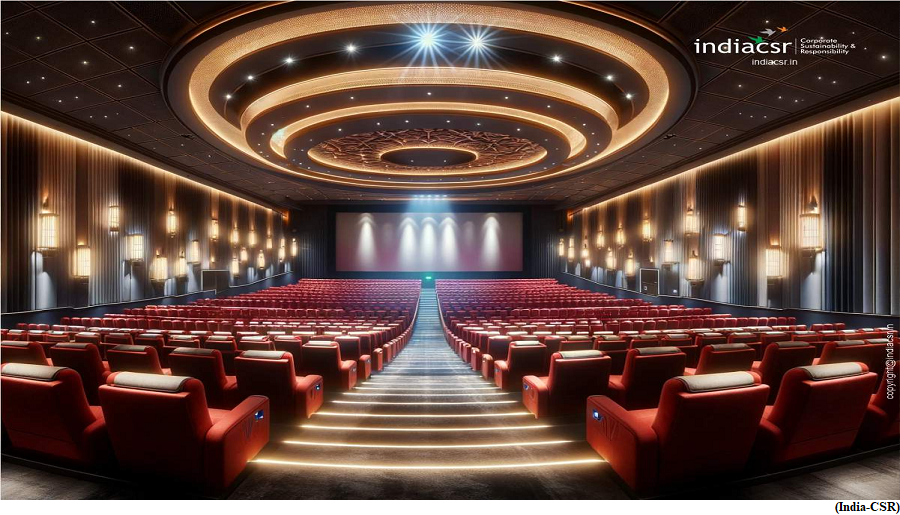What are the causes of the flare-up in eastern Congo? GS Paper 2, International Relation)

Why in news?
- Renewed clashes in the eastern Democratic Republic of Congo (DRC) have sparked global concern, worsening the humanitarian crisis.
Details:
- Fighting between the Congolese army and Rwandan-backed M23 group intensified around Sake and Nyanzale, resulting in deaths, displacements, and food security risks.
- The U.S. urged both countries to avoid war, calling for Rwanda to withdraw its personnel and missile systems. The United Nations and several Western countries have also denounced the attacks and called on the M23 rebels to cease their offensive.
What is the conflict?
- An unending cycle of violence has engulfed the eastern region of the central African country for decades, with the conflict originating in two civil wars.
Rwandan genocide:
- In 1994, an estimated eight lakh minority ethnic Tutsis and Hutu moderates were killed by extremist Hutus in 100 days, in what is now known as the Rwandan genocide.
- In the subsequent days, around two million people crossed the Congolese border (then known as Zaire) to settle in refugee camps in the eastern provinces of North Kivu and South Kivu as a Tutsi government gained control of Rwanda.
First Congo War:
- The ethnic tensions further set the stage for the First Congo War between the Zairean soldiers on one hand and the Tutsi militia and the Alliance of Democratic Forces for the Liberation of Congo (AFDL) on the other, with the backing of Rwanda and Uganda which wanted to root out the remaining perpetrators of the genocide.
- In 1997, the AFDL captured the capital Kinshasa and Zaire was renamed as the Democratic Republic of the Congo.
‘Africa’s world war’:
- Another deadly war followed in 1998 after the new regime ordered Rwandan refugees and troops to leave the country. It feared that Rwanda would join forces with Uganda. The war that followed was dubbed ‘Africa’s world war.’
- A new Rwanda-backed rebel group, the Rally for Congolese Democracy (RCD), began invading parts of Congo. In response, Congolese President Laurent-Désiré Kabila allowed armed Hutu refugees to organise in the east to fight against Rwanda.
- Since then, several agreements have been signed to put an end to what has been called one of the world’s deadliest conflicts since the Second World War, but fighting has continued.
Who are the M23 rebels?
- The March 23 Movement or M23, formed in 2012, claims to defend Tutsi interests against Hutu militias. Originating from a 2009 ceasefire agreement, it broke away from the Congolese army, accusing the government of failing to integrate Tutsis.
- The group resurged in 2022, citing attacks by Hutu militias. Recent attacks near Goma have escalated the humanitarian crisis, prompting protests urging Rwanda’s withdrawal of support.
- The worsening violence has led to an escalation in tensions between the DRC and Rwanda, with Congo accusing the latter of backing M23 rebels. Rwanda has repeatedly denied these allegations. Rwanda has claimed the escalation is due to Congo’s decision to send back regional peacekeepers.
What’s next?
- The new fighting could lead to an escalation of regional tensions and involve more countries. The International NGO Forum in Congo said the escalation has involved artillery attacks on civilian settlements, causing a heavy toll and forcing many health and aid workers to withdraw.
- There are concerns a new disaster could go unnoticed because of the attention on the war in Gaza and Russia’s invasion of Ukraine.
Government notifies the Guidelines of Accessibility Standards in the Public Exhibition of Feature Films in Cinema Theatres
GS Paper 2, Governance)
Why in news?
- The Ministry of Information & Broadcasting (MIB) has issued Guidelines of Accessibility Standards in the Public Exhibition of Feature Films in Cinema Theatres for Persons with Hearing and Visual Impairment.

Key objective of guidelines:
- Defining the general principles for accessibility of feature films;
- Identifying barriers to fully accessible feature films by determining relevant rules, requirements, standards and funding mechanisms to address such barriers;
- Putting in place measures to ensure that persons with hearing and visual impairment have access, on an equal basis with others, to the public exhibition of feature films in cinema halls/movie theatres screened for commercial purposes;
- Defining an institutional framework to ensure transparent oversight and impartial dispute resolution mechanism.
Key features of Accessibility Standards include:
- Ensuring Accessibility of films to Persons with Hearing and Visual Impairment
- Applicable for feature films that are for public exhibition in cinema halls/movie theatres for commercial purposes.
- Accessibility standards have not just been defined for film content, but also on assistive devices and theatre infrastructure, incorporating global best practices to prescribe the accessibility needed by persons with Hearing and Visual Impairment, to enjoy films in cinema theatres.
- Mandatory Accessibility Features: at least one accessibility feature each for the hearing impaired and visually impaired, i.e. AD & CC/OC
- “Audio Description” is the auditory narration of visual representations in a film for enhancing the film watching experience for visually impaired persons. During gaps in dialogue, it describes visual elements such as scenes, settings, actions and costumes.
- "Closed captioning" is the means by which both the audio dialogue and sound representations of a film are made visible on demand by the user via on-screen text that is synchronized with the audio content.
- Additional Accessibility Features: Indian Sign Language interpretation by Interpreters must be provided in a picture-in-picture mode and it must be accurate, synchronized and convey clear message to the hearing impaired.
- Film producer required to deliver the film for certification to CBFC along with files of accessibility features.
Implementation schedule:
- All feature films that are to be certified in more than one language to comply with the guidelines within 6 months and all others within 2 years
- Starting January 1st, 2025, films submitted for prestigious events like the National Film Awards & International Film Festival will also need to comply to these
Accessible features may be deployed by cinema theatre by any of the following means:
- Using the following separate equipment in theatres (during the regular show) such as Mirror Captions, Closed Captioning Smart Glasses, Closed Caption Stands, Closed Caption display below the Screen or Headphones/Earphones for Audio Description (AD), etc.
- Using Mobile Apps (during the regular show) –Film producers to integrate the CC/OC & AD for the feature film in any suitable software application to extend the accessibility feature in any usual screening of the film in the theatres, which can be used through the personal device of the user.
- Using other technologies: Use of any other technological inputs as supportive/assistive devices and software applications as available in the market.
Monitoring:
- Exhibitor Action Plans: Theatre owners will develop self-regulatory plans for accessibility, following consultations with disability stakeholders and implement accessibility features within 2 years.
- Monitoring Committee: A dedicated committee appointed by the MIB, Government of India, with half its members being persons with hearing/visual disabilities and representatives from the film industry, will oversee implementation of accessibility standards and provide guidance.
- Grievance Redressal: Viewers can also file complaints with theatre licensees if accessible features are unavailable. And the Committee will address their concerns within 30 days through the licencing authority.
Way Forward:
- This initiative also aligns with the Rights of Persons with Disabilities Act, 2016 (RPwD Act), which mandates government action to promote universal access and inclusion in information and communication, including access to films.
- These comprehensive guidelines establish a robust foundation for accessible feature film content and theatre infrastructure, fostering greater inclusion.



